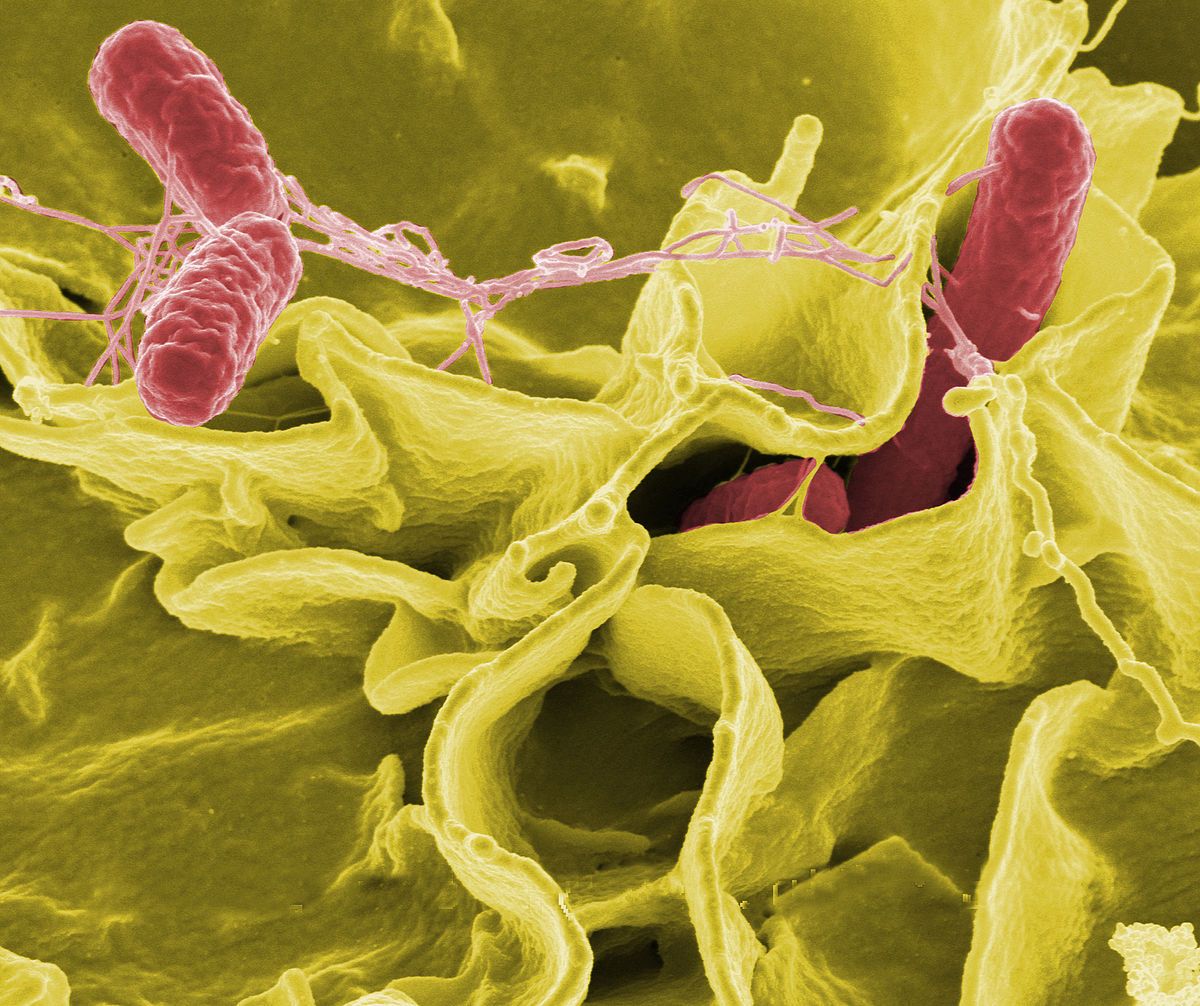Salmonellosis, also known as Salmonella infection and commonly as food poisoning, is a common bacterial disease caused in the intestinal tract by a group of bacteria called Salmonella. It is a disease usually associated with contaminated water or certain foods (eggs, meat and poultry) and can even be transmitted by pet reptiles.
The symptoms are typically not there but when they appear, they may include diarrhea, vomiting and abdominal cramps. Also, they appear 8-72 hours within the infection. Food poisoning, enteric fever, typhoid fever and other illnesses are types of this infection. Most of the healthy people recover after 4-7 days without any particular treatment but a person having severe diarrhea may be hospitalized.
Serious life threatening complications may also occur if the infection spreads apart from the intestines. The risk of acquiring salmonella infection is greater if you travel to countries with bad sanitation.
Read on here to know about the causes, symptoms, diagnosis and treatment of salmonella infection (salmonellosis).
Causes & Risk Factors
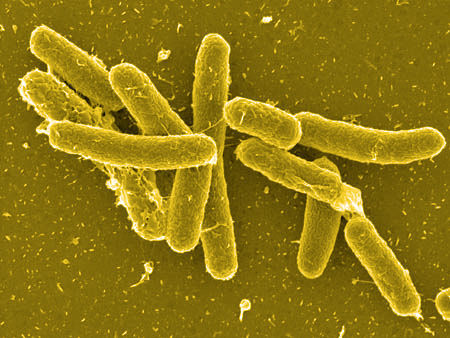
Salmonella bacteria lives in the intestine of people, animals and birds. Most of the people that get infected with salmonella by consuming water or eating food that get contaminated by feces.
-
When contaminated water is used to grow the crops or produce, the disease may be caused. While animal feces is a problem, the manure directly being dumped on the field is not.
-
Beef, pork, poultry and other meat all have this bacteria.
-
By eating contaminated fruits and vegetables that come into contact with manure from animals containing the bacteria can cause the disease. Animal excreta is often used as a fertilizer for both fruits and vegetables and that’s how salmonella can be caused in some people from that.
-
The way of preparing food at home can also be a cause of infection.
-
Some pets like dogs, cats, birds and reptiles also carry the bacteria and may cause infection.
-
Not washing the hands well after changing a diaper might cause you to catch the bacteria.
The risk factors that might lead to salmonella infection include international travel to places where poor sanitation is prevalent, lowered stomach acidity, inflammatory bowel disease, immune problems and recent use of antibiotics.
Signs & Symptoms
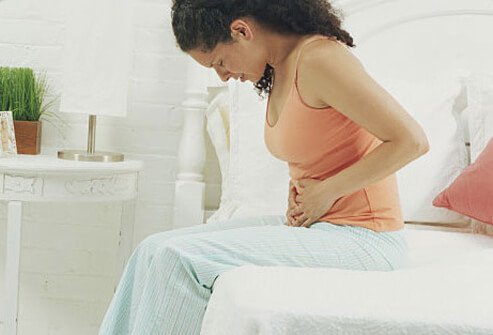
The incubation period of salmonellosis is generally within several hours to 2 days. Most of the salmonella infections are also classified as stomach flu (gastroenteritis). The possible signs and symptoms are:
- Vomiting
- Cold and Chills
- Fever
- Headache
- Abdominal cramps
- Blood in the stool
- Nausea
- Diarrhea
This infection usually lasts for about 2-7 days. The diarrhea may take 10 days or even several months before bowel turn normal. Some of the salmonella bacteria cause typhoid fever which is considered a lethal disease in some countries.
Complications
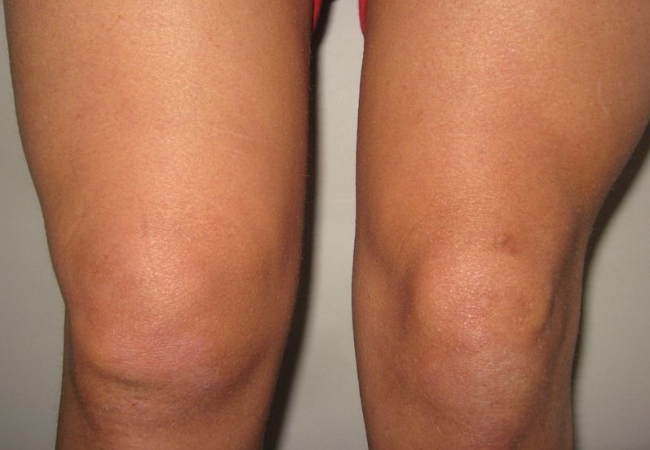
Salmonella infection is not life-threatening more often. But in some people especially infants, pregnant women, immunocompromised patients, transplant recipients, younger children and older adults are more likely to develop complications.
If you do not drink enough water to replace the fluids being lost due to persistent diarrhea, dehydration may take place. The warning signs include bacteremia (when the salmonella bacteria enters bloodstream), sunken eyes, dry mouth and tongue, reduced production of tears and decreased urine output.
When bacteria occurs, the tissues throughout the body can be affected such as brain, spinal cord, heart lining or valves. Reactive arthritis, also known as Reiter’s syndrome, may develop by infection and the affected individual may experience eye irritation, painful urination and joints.
Diagnosis
Salmonella infection can be diagnosed taking a test sample of stool or blood. The doctor may conduct further tests to find out the type of bacteria you may have.
Treatment
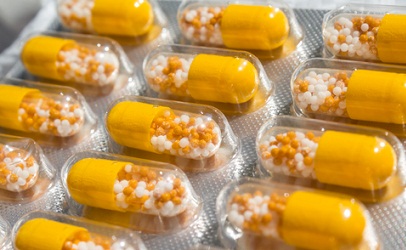
As the salmonella infection can cause dehydration, the treatment aims to replace fluids and electrolytes. The severe cases may need hospitalization and fluids are administered intravenously. Also, the doctor may recommend:
- Antibiotics
If your doctor thinks that salmonella bacteria has entered your bloodstream or you have a severe case or weak immune system, antibiotics may be prescribed to kill the bacteria. However, they are not effective in uncomplicated cases. Moreover, the antibiotics may lengthen the time of carrying bacteria and can infect others and can increase risk of relapse.
- Anti-diarrheal drugs
The medications like loperamide help in relieving cramps but ay prolong the diarrhea linked with the infection.
Prevention
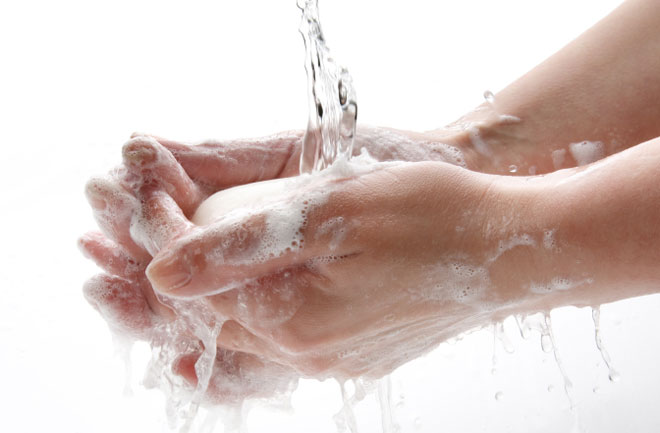
Even though salmonella bacteria can be present in various foods, you can take these preventive measures to make sure it does not enter the intestine:
- Do NOT eat raw and undercooked eggs, beef, pork or poultry.
- Do wash your hands with soap and warm water after and before handling food and coming into contact with the animals.
- Refrigerate the food properly before cooking it and after serving it.
- Make sure you clean the kitchen surfaces before food preparation.
- Be sure to wash the fruits and vegetables thoroughly and try peeling them if possible.
- Don’t mix cooked food with raw food or use same utensils for them.
- Do not dehydrate yourself and drink water or suck on ice chips. The children can be given an oral rehydration solution such as Pedialyte.
Image Source:
1. chinaaseansps
2. onhealth
3. findarthritistreatment
4. foodsafetynews
5. mmabuildingservices
